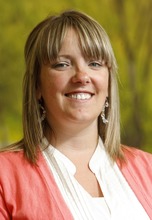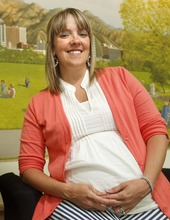This is an archived article that was published on sltrib.com in 2013, and information in the article may be outdated. It is provided only for personal research purposes and may not be reprinted.
In her new job as Utah's first statewide suicide prevention coordinator, Kimberly Myers will wear plenty of hats: social worker, policy analyst, data tracker, community coalition builder and infrastructure engineer.
It's a big job, Myers readily admits, but one that she feels is "possible" nonetheless.
"Suicide prevention is one of those things where you do have some real concrete things in place that can help bring rates down and save some lives," she said last week, following a webcast with federal health officials about a new national strategy for suicide prevention. "We can solve some of the issues that we are facing."
With suicide a major statewide health problem for residents of all ages, Utah needs solutions. Data from the state health department show an average of 402 Utahns died from suicide annually between 2006 and 2010. Suicide is the second leading cause of death among youth ages 10 to 17 and among young adults ages 18 to 24. Utah's suicide rate has been consistently higher than the U.S. rate for the last decade.
It is the fourth leading cause of death for all adults ages 24 to 64. Men ages 25 to 64 account for more than half — 52.3 percent — of all suicide deaths statewide, according to the data.
In 2011, the number of suicide deaths rose to 490 — or 19 out of every 100,000 residents — and the number has continued to climb, said Rick Hendy, administrator of adult mental health programs for the Utah Division of Substance Abuse and Mental Health.
"But last year, 562 people died," he said. "Our rates are 60 percent higher than they were eight years ago."
Those rising rates prompted state lawmakers to support legislation that created Myers' post at the Utah Department of Human Services and a companion suicide prevention coordinator's job at the State Office of Education, Hendy and Myers said.
"The problem is growing at a number that became too much to ignore," Myers said. "It's past time, basically. With these numbers we have more kids dying, more adults dying and more people attempting suicide."
A major focus of Myers' job will be to identify existing public and private or nonprofit suicide prevention programs statewide and look for opportunities for those groups to work together. Building that kind of infrastructure, she expects, will allow health workers to better respond to and serve their communities when suicides are attempted or deaths occur.
It's an effort that many local health agencies and organizations were growing on their own, and that Myers had worked on last year as the Prevention by Design program coordinator for the Utah chapter of the National Alliance on Mental Illness.
The idea is to give communities, from families to school administrators, clergy, health workers and others, the tools to better identify individuals who might be at risk and connect them with prevention or support services.
She also wants to help build a better understanding of the factors that lead to suicide and give voice to those who have suffered the loss of a loved one.
"Every single life has a ripple effect," Myers said. "So every single life that you lose affects a community in ways that are sort of unspeakable."
Another task for Myers: Making sure that Utah's 2013 Suicide Prevention Plan — its first in about five years — moves from ideas on paper into programming and community action.
Developed over the past year, the plan outlines nine goals for raising public awareness, developing public policy, promoting prevention education and training, increasing access to support and services and more. Much of the work is already underway. After her upcoming maternity leave, Myers wants to build on that momentum and the commitment she sees in community groups and health workers from state and local agencies across Utah.
"There is a lot of support," she said. "That's what makes this 100 percent more exciting and makes it feel possible that we can make the changes and see the impact and move the work forward."
Twitter@jenniferdobner





